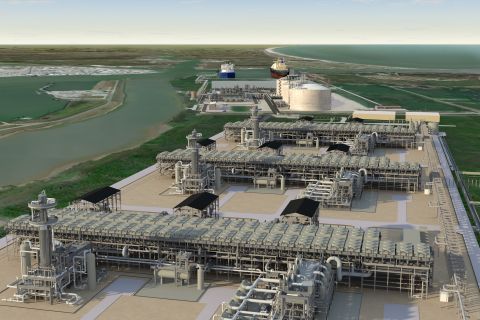HOUSTON—TransCanada Corp. (TSX: TRP) (NYSE: TRP) March 1 announced the Federal Energy Regulatory Commission (FERC) has approved the full in-service of its Mountaineer XPress (MXP) project, allowing the company to increase the flow of gas on MXP and begin operating its Gulf XPress (GXP) project. The projects are a vital link between Appalachian natural gas supplies and growing markets in the U.S. and beyond.
“Mountaineer XPress and Gulf XPress are extremely important to TransCanada as they provide much-needed takeaway capacity for our customers, while also growing our extensive footprint in the Appalachian Basin,” said TransCanada President and CEO Russ Girling. “Both projects will also deliver attractive long-term returns and stable cash flow for our shareholders.”
Designed to deliver clean, affordable, domestically produced natural gas, MXP is comprised of 170 miles of 36-inch-diameter pipeline, three new compressor stations, and modifications to three existing compressor stations—representing an investment of approximately $3.2 billion. The pipeline is capable of transporting 2.7 billion cubic feet of natural gas per day (Bcf/d) to the TCO Pool and Leach markets on the Columbia Gas Transmission System. MXP is underpinned by long-term contracts with customers.
Partial in-service of the approximately $600-million GXP project includes placing into service four new compressor stations in Kentucky, Tennessee and Mississippi. Together, these facilities will provide additional capacity of 530,000 million cubic feet of natural gas per day on the Columbia Gulf Transmission System, which equates to approximately 60% of the project’s total capacity. GXP is also underpinned by long-term contracts with customers and is expected to be placed into full service in the coming weeks.
Since 2015, representatives of MXP and GXP have worked closely with federal regulators, landowners and numerous state and local officials to ensure they were a part of the process from construction to completion. The projects created significant job opportunities and will generate millions of dollars in taxes and other economic benefits for the counties they cross into the future.
Recommended Reading
Segrist: The LNG Pause and a Big, Dumb Question
2024-04-25 - In trying to understand the White House’s decision to pause LNG export permits and wondering if it’s just a red herring, one big, dumb question must be asked.
Texas LNG Export Plant Signs Additional Offtake Deal With EQT
2024-04-23 - Glenfarne Group LLC's proposed Texas LNG export plant in Brownsville has signed an additional tolling agreement with EQT Corp. to provide natural gas liquefaction services of an additional 1.5 mtpa over 20 years.
US Refiners to Face Tighter Heavy Spreads this Summer TPH
2024-04-22 - Tudor, Pickering, Holt and Co. (TPH) expects fairly tight heavy crude discounts in the U.S. this summer and beyond owing to lower imports of Canadian, Mexican and Venezuelan crudes.
What's Affecting Oil Prices This Week? (April 22, 2024)
2024-04-22 - Stratas Advisors predict that despite geopolitical tensions, the oil supply will not be disrupted, even with the U.S. House of Representatives inserting sanctions on Iran’s oil exports.
Association: Monthly Texas Upstream Jobs Show Most Growth in Decade
2024-04-22 - Since the COVID-19 pandemic, the oil and gas industry has added 39,500 upstream jobs in Texas, with take home pay averaging $124,000 in 2023.




